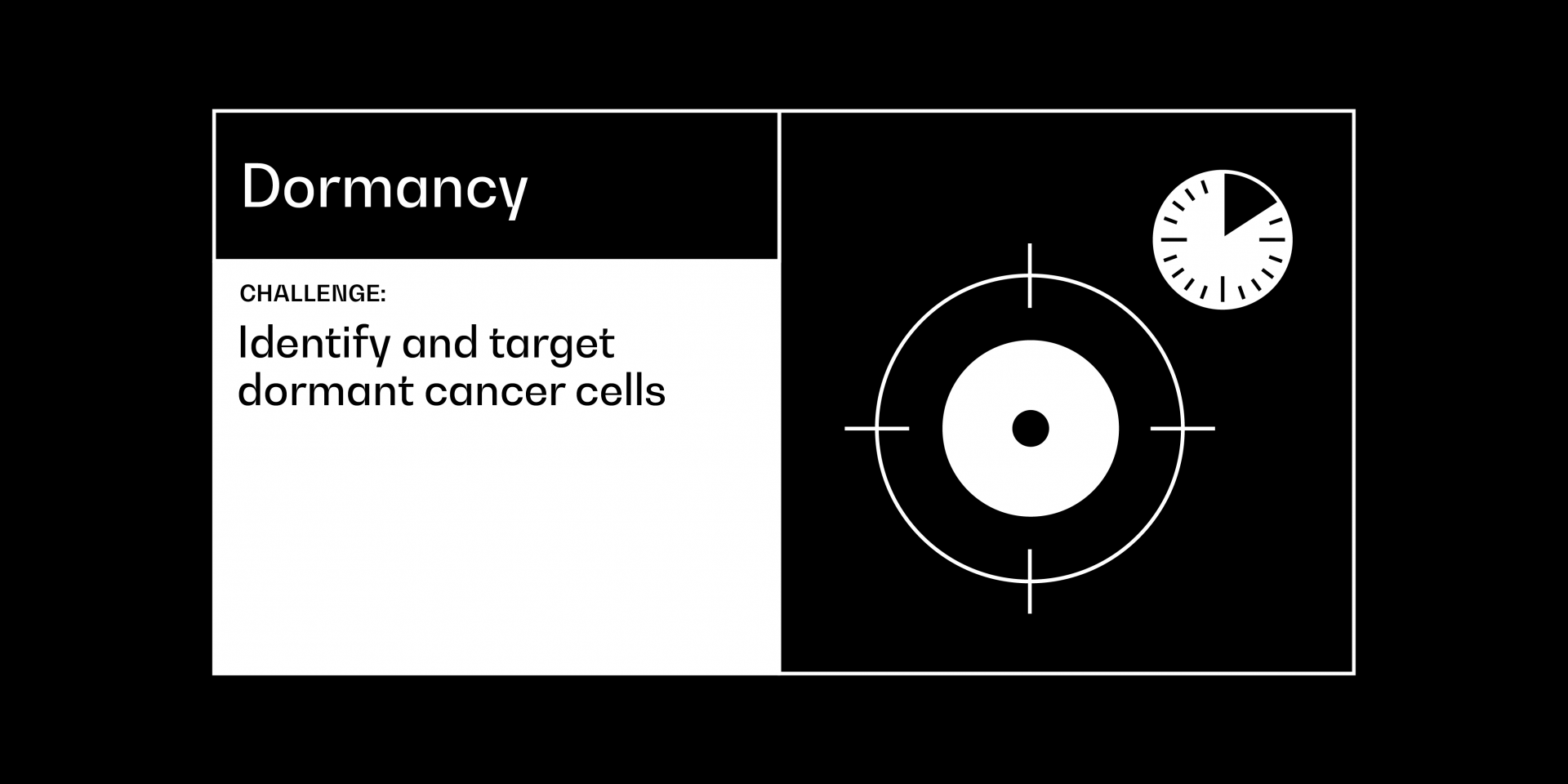
Dormancy (2020)
Challenge: Identify and target dormant cancer cells
This was a challenge in an earlier round, we are not currently accepting applications for this challenge.
Context
Cancer cell dormancy is a process whereby cells enter a reversible cell cycle arrest. Dormant cells are considered to be responsible for metastatic relapse. Disseminated cancer cells can persist in a dormant state for many years or decades following treatment, but in response to signals that have not yet been fully identified, such dormant cells can reawaken and grow into larger metastatic lesions. The ability to identify and characterise cancer cells in a dormant state is challenging, but this is key to gaining a better understanding of the signals and environment that allows the establishment of dormancy and how dormant cells are reactivated. Such understanding would enable novel approaches to target dormant cells by preventing reactivation or enabling selective eradication.
Barriers and opportunities
This challenge specifically relates to the study of dormant cells that exist after seemingly successful treatment (i.e., following a latent period where the patient displays no clinical symptoms). The goal is to understand the molecular mechanisms that regulate the dormant state and use this understanding to develop therapeutic strategies.
Examples of the types of questions that could be addressed in this challenge include but are not limited to:
- Can methods be developed to detect and isolate dormant cells?
- Can we identify circulating biomarkers that indicate the presence of dormant cells?
- What role does the microenvironment play in regulating the dormant state?
- Is it possible to develop preclinical models that accurately reflect tumour dormancy in patients and provide novel insights into how dormancy is regulated?
- By understanding the mechanisms regulating tumour dormancy, can we develop approaches to eradicate dormant cells, or prevent their re-emergence?
Vision and Impact
The goal of this challenge is to develop innovative approaches to accurately study dormant tumour cells and better understand the mechanisms that control dormancy in patients. Eliminating dormant tumour cells or preventing their activation has huge therapeutic potential to limit the rates of cancer recurrence.
Addressing this challenge will require a multidisciplinary team, which may include expertise in biology, mouse modelling, and clinical oncology to overcome the barriers of how to identify and isolate dormant cells. Teams will have to develop relevant experimental models to allow detailed consideration of both tumour intrinsic and extrinsic factors that regulate dormant cell behaviour, studies should also be extended into human systems.
Plain language summary: Why dormancy?
Even after apparently successful treatment, cancer can unfortunately come back, sometimes growing and spreading rapidly many years after the initial diagnosis. It’s believed that one reason for this is that cancer cells that survive the initial treatment can enter a hibernation-like state called dormancy.
Dormant cancer cells’ behaviour is the opposite of what we view as normal in cancer. Instead of dividing rapidly, they stop dividing altogether, and become very tricky to detect. But what causes these cells to become dormant, how and where they hide, and what causes them to wake up again are all unknown.
This Cancer Grand Challenge aims to shed light on these unknowns. By unravelling the mystery of cancer cell dormancy, researchers could find ways to detect these dangerous cells and then eliminate them or stop them waking up.